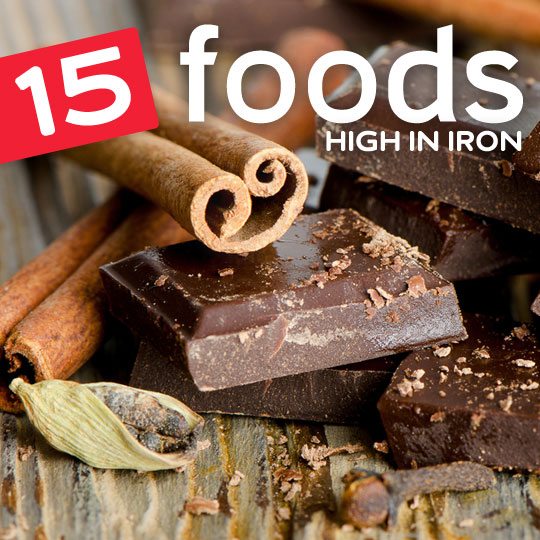The following foods highest in iron will play a key role in your healthy lifestyle. Getting your daily requirement of iron is important, as iron is involved in so many of the body’s basic functions. These include helping to carry oxygen throughout the body, helping your muscles and brain work at their full capacity, and preventing the onset of anemia.
[hr]
[column size=”one-third”] [/column]
[/column]
[column size=”two-third” last=”true”]
1. Liver: 23mg Iron (128% DV)
Pick a liver, any liver, and chances are you’re getting as much iron as you’ll need for the day. Perhaps the most easily found liver in supermarkets is beef liver. It’s always a good idea to buy organic if you can find it, and go to a butcher if your local grocery store doesn’t carry organic beef liver.
Liver may not currently be on your regular menu, but you don’t have to eat very much of it in order to benefit from its iron content. 100 grams provides more than a day’s worth of iron, so you could eat much less than that in one sitting, while combining it with other foods that also have iron in them.
Liver is not only ultra-high in iron, it is a good source of other minerals as well, such as zinc, phosphorous, and even copper.
Tips for eating more: While eating liver may sound off putting at first, it is a meat like any other and can be added to chili and soups for the same flavor you’d expect from beef or other cuts of meat. If you can come to terms with it in your mind, and season it right you may even come to enjoy it.[/column]
[hr]
[column size=”one-third”] [/column]
[/column]
[column size=”two-third” last=”true”]
2. Soybeans: 15.7mg Iron (87% DV)
Soybeans can help you reach your iron goals in a big way. Raw soybeans have the most iron, and when you boil them you’ll lose some of the iron content, but they still remain quite high in protein.
Soybeans are typically made into other food items like tofu or tempeh. This reduces the total amount of iron they contain, but there will still be a good amount. For example, tofu has 4.5mg and tempeh has 2.7.
Edamame is one example of soybeans that have been harvested before their prime and are eaten directly. While you won’t get as much iron from it (3.5mg in 100g) you’ll still be helping add to your total iron intake for the day.
Tips for eating more: Consider adding soybeans to the next soup you make. You’ll not only be adding iron to it, but tons of protein and fiber, not to mention added texture.[/column]
[hr]
[column size=”one-third”]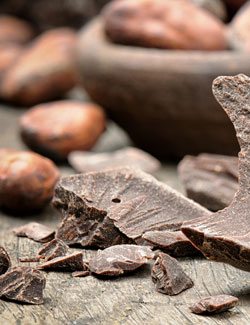 [/column]
[/column]
[column size=”two-third” last=”true”]
3. Dark Chocolate: 11.9mg Iron (66% DV)
You might have heard that you should start eating dark chocolate instead of milk chocolate for health reasons. One of those reasons is its high iron content, something milk chocolate also contains.
There are several types of dark chocolate that you can buy, and it’s broken down by the amount of cocoa solids it contains. The higher the percentage, the more it’s purely cocoa, so pick the highest level that you find still tastes good, as it gets pretty bitter the higher up you go.
Dark chocolate also provides you with antioxidants that you won’t find in milk chocolate. It contains far less sugar and in some cases no milk, just be sure to check the label on the chocolate you’re considering to see that it’s pure.
Tips for eating more: Dark chocolate works best as a way to satisfy your sweet tooth and chocolate craving, and you don’t want to overdo it. Stick to the serving size on the chocolate’s packaging, and look to an assortment of foods to get your full iron for the day.[/column]
[hr]
[column size=”one-third”]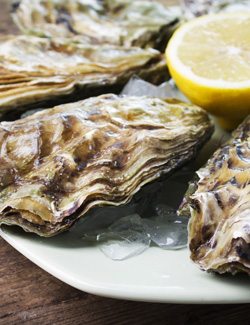 [/column]
[/column]
[column size=”two-third” last=”true”]
4. Oysters: 7mg Iron (39% DV)
Oysters are well-known as being an aphrodisiac, but they’re also a great iron food. Since iron helps circulate oxygen throughout the body, their high iron content may also help give you the get up and go that they’re known for.
This is one instance where you can go with farm-raised oysters rather than wild caught. Most seafood you’re better off going with wild caught, but wild caught oysters are harder to find, and they’re not a sustainable option.
Oysters are also a good source of protein and other minerals like zinc, as well as amino acids which is where it gets its reputation as being a romantic firestarter. The specific amino acids it contains are said to boost levels of sex hormones in the body.
Tips for eating more: Oysters work well in seafood stews and chowders if you don’t like eating them raw. There are also oyster dishes that cook the oysters, like Oysters Rockefeller, which changes their texture and flavor and may make them more appetizing.[/column]
[hr]
[column size=”one-third”]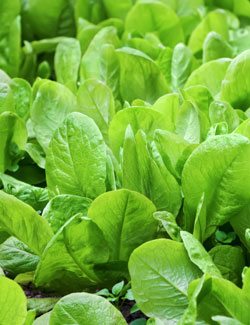 [/column]
[/column]
[column size=”two-third” last=”true”]
5. Spinach: 3.5mg Iron (19% DV)
One feature of spinach that helps it with its reputation as a healthy vegetable is its iron content, placing it in the top 5 foods high in iron. It’s a food that helps keep your body alkaline and contains antioxidants that will help your body fight off damage from free radicals, making it one of the more important foods you can eat.
You’ll want to opt for organic spinach whenever possible, as it is a very absorbent vegetable and conventional spinach will have soaked up the pesticides and herbicides sprayed on it during the growing season.
Spinach contains an array of phytonutrients in addition to its iron content, and is consistently ranked as one of the healthiest foods you can eat. Do everything you can to get more spinach into your diet, especially during the spring and summer months.
Tips for eating more: Adding spinach to a smoothie instantly makes it a green smoothie and not only gives you more iron but also gives you fiber, Vitamin A, and Vitamin C. Try using baby spinach in place of lettuce in salads and on sandwiches.[/column]
[hr]
[column size=”one-third”] [/column]
[/column]
[column size=”two-third” last=”true”]
6. Lentils: 3.3mg Iron (18% DV)
Lentils have been gaining a lot of traction as a health food, mostly for their fiber content and the way they’re slowly digested by the body. Being a good source of iron is just one more reason to start adding them to your regular lineup.
If you serve up your lentils with a protein like chicken breast or beef, two foods also found on this list, you’ll be doing a good job of rounding out your iron profile for the day, and making it a complete meal. Add a veggie side and you have a complete meal and a big chunk of your iron requirement met.
When choosing which lentils to eat, it’s better to buy them in bulk and then boil them up as needed rather than buying them from a can. You’ll get more nutrients from them, and have more quality control, especially if you start with organic lentils.
Tips for eating more: Adding lentils to a soup instantly gives it more fiber and iron, as well as thickens it up and introduces a new texture.[/column]
[hr]
[column size=”one-third”] [/column]
[/column]
[column size=”two-third” last=”true”]
7. Olives: 3.3mg Iron (18% DV)
Olives may seem like an unlikely source for iron, but they rank fairly high on our list of foods with iron.
With so many different types of olives out there, it’s nice to know that no matter which one you pick you’ll be getting a decent amount of iron. Be aware that stuffed olives may contain things that increase your fat or sodium levels further, like cheese and anchovies.
Olives contain fiber as well as monounsaturated fat, one of the healthy fats, so they can be used as part of a healthy diet, as long as you are watching your sodium intake.
Tips for eating more: Olives are relatively high in sodium, so you won’t want to eat too many of them as a way of bringing up your iron level. Have a few of them to help contribute to your overall iron intake, and rely on an assortment of iron-rich foods to help get you to your requirement.[/column]
[hr]
[column size=”one-third”] [/column]
[/column]
[column size=”two-third” last=”true”]
8. Pumpkin Seeds: 3.3mg Iron (18% DV)
Pumpkin seeds are one of the healthier seeds you can eat, not only because they contain so much iron, but because they contain omega-3s, which can help with an assortment of conditions.
They also contain tryptophan, which will help relax the body and help you sleep, as well as being a good source of protein which will help you if you’re trying to increase your protein intake.
In addition to iron they’re also a good source of magnesium and zinc, and this combination will help with the heart and the prostate, as well as providing you with the benefits of iron as discussed at the top of this page.
Tips for eating more: Pumpkin seeds make a great year round snack, and it’s easy to grab a handful and munch on them between meals. They can also be used as a salad topper, or as a garnish for a soup or a main dish.[/column]
[hr]
[column size=”one-third”] [/column]
[/column]
[column size=”two-third” last=”true”]
9. Beef: 2.9mg Iron (16% DV)
Beef is one of the tastier items on our list of foods with high iron content. It’s also a source of massive protein, and can be used as part of a diet program that is intent on building lean muscle.
In addition to iron beef also contains important B Vitamins, as well as minerals like potassium and magnesium.
Because of the saturated fat found in beef you’ll want to make sure that you are only eating it on an occasional basis. While it may be high in iron, diets high in red meat have been shown repeatedly to be hazardous to your health.
Tips for eating more: Beef is a very versatile meat, and can be used in countless recipes as a source of both iron and protein, as well as other essential minerals. Make sure you stick with lean cuts of beef and reduce your number of servings to a few times a week for all of the benefits.[/column]
[hr]
[column size=”one-third”] [/column]
[/column]
[column size=”two-third” last=”true”]
10. Asparagus: 2.1 Iron (12% DV)
Asparagus clocks in at over 10% of your daily value of iron from a 100g serving. That’s a pretty good amount from a vegetable source, making it a tasty way to up your iron numbers.
Asparagus is also high in vitamins A and C, two powerful antioxidants that help your vision and your immune system respectively. You’re also getting a fair amount of fiber from it, making it more than just a one-trick pony when it comes to your health and nutrition.
While you’ll often see asparagus served up as a side dish, you can use it in vegetable soups, or as a way to top a salad. Asparagus tastes great fresh, and has a crisp clean flavor to it.
Tips for eating more: Load up on asparagus during the spring months when it’s in season and available from farmer’s markets fresh and locally grown.[/column]
[hr]
[column size=”one-third”]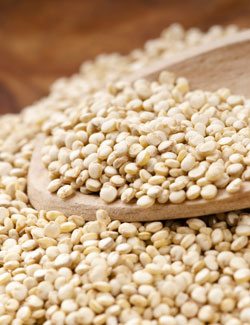 [/column]
[/column]
[column size=”two-third” last=”true”]
11. Quinoa: 1.5mg Iron (8% DV)
Quinoa has risen in popularity over the years, and now it’s generally accepted as a healthy food in most circles. Part of this is because of its Iron content.
Iron isn’t the only mineral that quinoa boasts high numbers, it has a good amounts of magnesium and potassium as well.
Quinoa is considered a pseudo-grain, and part of its popularity is due to the fact that it doesn’t contain any gluten, and can be consumed as part of a gluten-free diet. While many diet plans say quinoa is an approved food, other diets dismiss it. The Paleo diet in particular is a popular diet plan that puts quinoa on the Do Not Eat list.
Tips for eating more: Quinoa can be used as a substitute for rice and couscous, and hundreds of quinoa recipes have emerged due to its surging popularity. It provides things like iron, protein, and fiber, that these other sides just don’t have.[/column]
[hr]
[column size=”one-third”] [/column]
[/column]
[column size=”two-third” last=”true”]
12. Artichokes: 1.3mg Iron (7% DV)
Artichokes have a pretty impressive amount of iron for a vegetable. To get the most iron you’ll want to buy them fresh and roast them.
Artichokes are also a good source of fiber, so you’ll be doing your body a favor by simultaneously tending to your fiber intake.
And that’s really what it’s about when it comes to eating foods for their specific qualities. You want to eat a balanced diet to ensure that you’re not just getting your iron needs met, but all of your other needs as well. The best way to do this is to eat a varied diet, paying attention to the overall nutrient content of your full day’s meals.
Tips for eating more: Artichokes are perhaps most famously used in spinach artichoke dips, which you can keep on the healthy side by using fresh, organic artichokes and spinach, and going easy on the cheese and sour cream. Try roasted artichokes on salads, or add them to soups for extra flavor, iron, and fiber. Try out a Roman artichoke recipe for a real treat.[/column]
[hr]
[column size=”one-third”]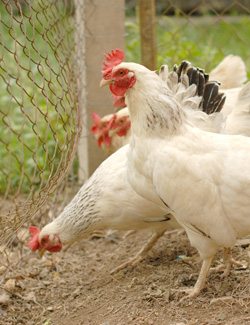 [/column]
[/column]
[column size=”two-third” last=”true”]
13. Chicken Breast: 1.1mg Iron (6% DV)
Chicken breast is a commonly used meat source, and it will provide iron to your body. While it does rank considerably lower than other food items on our list, it is nevertheless an important contributor to your iron level.
Rather than think of specific foods that you should be eating because of their iron content, it’s better to think of the foods you already eat on a regular basis, and then appreciate them even more for the iron they contain.
Chicken breast is a great source of protein, which is why you’ll often see bodybuilders chowing down on it, as well as those just looking to put on some lean muscle. Adding an iron-rich vegetable like the ones found on this page is a great way to round out what chicken breast has to offer.
Tips for eating more: Chicken breast is arguably the most popular meat in America, and there are so many different ways to prepare it that it’s easy enough to start eating more. While not a huge source of iron, it can play its part in helping you reach your daily goals.[/column]
[hr]
[column size=”one-third”] [/column]
[/column]
[column size=”two-third” last=”true”]
14. Squash: 0.7mg Iron (4% DV)
As we near the end of our list of high iron foods, there are many vegetables that have some iron in them, not a ton, but more than other foods.
Squash is one such vegetable that doesn’t get as much respect as say spinach, broccoli, or kale, but deserves to be noted for its iron content, among other things.
The beauty of squash is its many varieties. Be sure to try them all to see which ones you like best, and to determine which ones go better with which foods. They make great side dishes, and they can also be found in many casseroles and other recipes where they assist the main entree.
Tips for eating more: Squash is a fun vegetable to work with in the kitchen because it comes in so many varieties and can be used in any number of ways. For example, spaghetti squash can be shredded lengthwise and used as a replacement for traditional spaghetti noodles. Butternut squash can be made into a lasagna. Acorn squash can be roasted and eaten right out of its peel.[/column]
[hr]
[column size=”one-third”]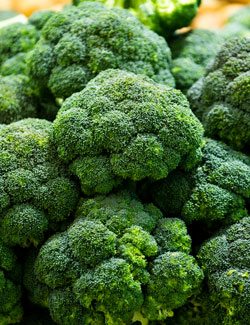 [/column]
[/column]
[column size=”two-third” last=”true”]
15. Broccoli: 0.7mg Iron (4% DV)
Broccoli is a vegetable that you simply have to feel good about eating, given that it is so high in so many departments. Iron is one area where broccoli can help you out, but that really only scratches the surface on why broccoli is so good for you.
The fiber content in broccoli can’t be ignored, and it helps out your digestive system by providing 10% of the fiber you need.
Not only will broccoli give you a bit of iron to help your cause, and in addition to all of the fiber, you’ll be getting your fair share of vitamins as well. It’s particularly high in Vitamin C, and you’ll be getting a full day’s supply in a 100g serving. It also contains a respectable amount of protein for a vegetable.
Tips for eating more: Broccoli gets a bad rap for being a vegetable that isn’t tasty. But it’s all in how you prepare it. If you don’t like the taste of broccoli by itself, try adding it to vegetables that you do like. It plays well with others and can play a smaller role in your iron needs for the day.[/column]
[hr]
Want more? Check out our list of Iron-Rich Foods for Vegans and Vegetarians



